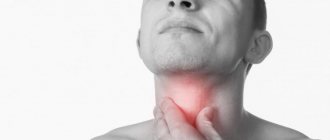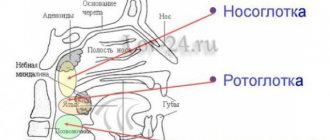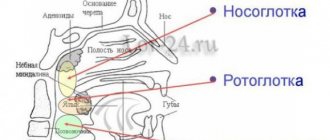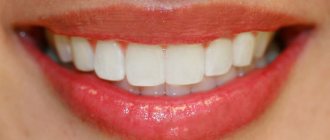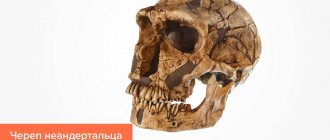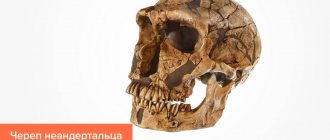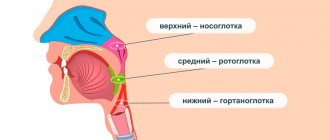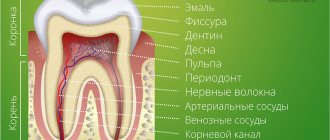When the upper and lower jaws close, the dentition interacts with each other in a special way. This interaction is called "bite". How correctly the dentofacial apparatus functions depends on the nature of the closure of the dentition.
A normal or physiological bite ensures the high-quality functioning of the dental system. A person with a normal bite has clear diction, free breathing, and an attractive smile.
Pathological occlusion is a serious deviation in which the functioning of the masticatory muscles and the temporomandibular joint is impaired. As a result, the patient feels discomfort when chewing food, his teeth deteriorate, his appearance deteriorates, and his quality of life is disrupted.
In order to describe the types of disorders in the structure of the dentofacial apparatus, a classification of occlusions is carried out. There are three degrees in dentistry.
- The first degree assumes a normal or physiological bite. The main signs of a normal bite: there are no pronounced gaps between the closed upper and lower teeth, their contact occurs symmetrically, the central line of the jaws coincides with the midline of the face.
- The second and third degrees indicate the presence of deviations from the norm of varying intensity.
There are different types of normal and pathological occlusion.
Types of normal occlusion
According to statistics, no more than 30% of the population have a normal bite. There are several types of teeth arrangement that meet all the signs of a correct bite:
- Orthognathic. The teeth of the upper jaw overlap the lower teeth by a third of the crown size. When the jaws close, close contact occurs between the teeth.
- Straight. The cutting edges of the upper and lower teeth are in close contact. Correct occlusion of molars and premolars is mandatory.
- Biprognathic. The upper and lower incisors have a slight inclination towards the vestibule of the mouth. There is contact between the incisors, and the upper canines slightly overlap the lower ones.
- Progenic. The teeth of the lower jaw are pushed forward relative to the upper ones. The closure is maintained.
With any type of normal positioning of teeth, bite correction is not carried out, since the load on the teeth is carried out evenly. Food is chewed thoroughly, the temporomandibular joint is not overloaded.
What to do in case of malocclusion, and how to correct it in adults?
In modern dentistry, various designs are used, with the help of which even significant violations can be eliminated. Various braces systems restore the correct position of the dentition. In this case, treatment takes place according to an individually developed plan.
As a result, the external defect in the facial structure and the physiological disorder disappear - this normalizes the load on the teeth during the process of chewing food.
Correction can and should be carried out even in adulthood. The orthodontist will select an option that causes minimal discomfort and ensures the most effective restoration of normal occlusion.
How does the bite change when teeth are missing?
Injuries, advanced caries and other pathologies can lead to premature tooth loss. Their absence provokes not only a deterioration in chewing function, but also a significant malocclusion.
As a result, the functioning of the temporomandibular joints is disrupted, the skin of the face loses its tone and becomes covered with wrinkles.
If the bite is disturbed in the absence of an incisor, the load on the adjacent teeth increases, this can lead to their displacement with significant visual deviations.
In addition, due to the increased load, the risk of losing adjacent teeth and additional problems with biting hard foods increases. Visually, the lips begin to collapse, the nasolabial fold becomes deeper, and the corners of the mouth droop.
All this visually makes a person older
The bite in the absence of chewing teeth is also quickly disturbed: the cheeks visually sink, the skin tone is disturbed, and over time, atrophy and thinning of the bone tissue occurs. The solution to the problem of complete absence of teeth will be only comprehensive prosthetics with restoration of the entire dentition.
If only a few teeth are missing in the jaw, you can choose the appropriate prosthetic option - this is the installation of removable and fixed dentures, as well as modern implants implanted into bone tissue.
What does malocclusion affect?
Defects in the dental system negatively affect the condition of the entire organism - this has been repeatedly confirmed by scientists during observations and research.
Malocclusions affect both the appearance and functionality of the dentition, and the psychological state of a person. Defects in appearance provoke psychological complexes and self-doubt; they can become an obstacle to finding a partner and self-development.
We can list only a few facts about how dental occlusion affects a person’s appearance and health:
- Faster wear of enamel due to improper distribution of chewing load. This leads to increased sensitivity of the teeth, pain when exposed to heat and cold, exposure of the necks of the teeth and their premature loss.
- Pathologies of the temporomandibular joints. Their improper functioning can cause constant headaches and decreased performance.
- Aesthetic defects. It is easy to see what an incorrect bite affects : the proportions of the face are sharply distorted, wrinkles appear, and the smile is distorted.
- Functional disorders. Chewing function suffers; insufficient chewing of food provokes gastrointestinal diseases.
- Speech defects. She may become unintelligible, leading to communication difficulties and decreased self-esteem. Distortion of facial expressions is also possible.
- Breathing disorders. As a result, various pathologies of the nasopharynx and trachea may occur.
What else affects the bite of a person’s teeth?
If a crooked tooth scratches the inner surface of the cheek, over time this leads to inflammation and serious pathologies. Tooth enamel suffers from constant increased exposure, resulting in chips and other damage.
Methods for eliminating malocclusions
Orthodontic treatment using modern methods can eliminate even very serious disorders. The only exception is a declining bite: such a disorder occurs as a result of the natural grinding of teeth throughout life.
In this case, various prosthetic options are used to correct the irregularities, including the installation of new dental crowns made of durable materials or veneers.
The most common option is to correct the bite with braces in adults or use aligners. Special designs are made according to a personally developed model. The doctor determines the sequence of correction of the disorder and draws up an individual treatment plan.
Another option is to treat the bite with aligners made of transparent material. It lasts longer, but allows you to minimize discomfort.
, the orthodontist will conduct a full examination and determine all the causes of the violations. If it is possible to correct the bite without braces , he will prescribe appropriate therapy.
However, orthodontic structures remain the most in demand.
In the most difficult cases, surgery is required. Make an appointment with a specialist to find out exactly about the condition of your bite and get effective treatment.
Types of abnormal bite
Any type of abnormal bite is characterized by the presence of gaps between the teeth of the upper and lower jaw. Lack of contact creates problems when chewing food, diction is impaired, and the oval of the face changes.
- Open is characterized by the presence of areas of non-closure in the anterior or lateral areas of the dentition. It is manifested by the presence of a gap between the teeth of the upper and lower jaw, non-closure of the lips, leading to disruption of the functions of chewing, breathing, and diction.
- Deep . The teeth of the upper dentition overlap the lower ones by more than 30% of the crown height. The most common type of abnormal bite. A strong degree of pathology leads to constant trauma to the mucous membrane of the gums, which is why this type of bite is called traumatic.
- Distal . It is characterized by protrusion of the upper dentition in relation to the lower one due to abnormal development of the upper jaw (or underdevelopment of the lower jaw). External signs are a sloping chin, shortening of the upper lip and retraction of the lower lip. The upper and lower incisors do not have contact, and the lateral ones do not close correctly.
- Cross is characterized by the crossing of the dentition when closing. Characteristic signs are facial asymmetry as a result of uneven development of the jaw areas. The patient complains of diction defects, accidental biting of the inner cheeks and pain when chewing.
- Mesial . It is characterized by the advancement of the lower dentition as a result of underdevelopment of the upper jaw or abnormal development of the lower jaw. Poor contact between the teeth of the lower and upper jaw leads to dysfunction of chewing and speech. Externally, the anomaly is manifested by the presence of a massive chin, a receding upper lip, and a concave face profile.
Dividing each type of abnormal bite into separate subcategories helps determine the degree and nature of the pathology.
If there are even minimal deviations, you should consult an orthodontist for advice. Pathology of the dentofacial apparatus has a tendency to progress and develop complications from the gastrointestinal tract.
Why do humans need teeth?
Nature has inherent different anatomical and biological tasks, goals and capabilities in humans.
And teeth, of course, are very important for the active life of each of us. So, what is the importance of having teeth, because nature provides them for something:
- Firstly, teeth are needed to nourish our entire body. They can bite, crumble and chew food;
- Secondly, teeth help us communicate through oral speech, and not with our fingers. They are especially important when pronouncing certain sounds. For example: such as f, v, s, z;
- Thirdly, they are designed to support the facial muscles. If teeth are missing, then a distortion of the face occurs;
- Fourthly, the amount of information that our memory can retain depends on the number of teeth;
- Fifthly, smooth, beautiful, white colors make you want to smile and laugh more often. As Victor Marie Hugo said: “Laughter is the sun: it drives winter away from the human face.” Or Michael Jackson: “Laughter and smile are the sun and the air: they drive away the sadness and loneliness of the human soul.”
Causes of pathological bite
The formation of occlusion is a long and complex process that begins at the stage of intrauterine development, continues in early childhood and ends after the end of puberty. Pathological occlusion is the result of long-term influence of a number of unfavorable external or internal factors at different periods of a person’s life:
- Genetic factor. A genetically determined anomaly is formed when there is a congenital discrepancy in the size of the teeth and dentofacial bones (crowding of teeth or the presence of spaces between teeth) or a hereditarily determined abnormal shape and size of the lower and upper jaws.
- The influence of negative factors on the body of a pregnant woman. The formation of the dental apparatus in the fetus can be influenced by bad habits, poor nutrition and diseases suffered by a woman during pregnancy.
- Birth injury. During childbirth, the baby may receive injuries leading to displacement of the temporomandibular joint.
- Negative factors affecting the baby’s body in the first years of life. The reason for the formation of a distal bite may be the incorrect selection of nipples or the late introduction of solid foods into the diet.
- Bad habits and behavioral factors in early childhood. The habit of sucking a pacifier or finger, or sleeping with the head thrown back can cause a child to develop a deep bite.
- Factors influencing the formation of anomalies in later life. These include carious lesions of the teeth, ENT pathologies, deviated nasal septum, and diseases of the skeletal system.
Treatment of abnormal bite should begin as early as possible. Early diagnosis and therapy make it possible to restore the normal functioning of the dentofacial apparatus more effectively. Doctors at the Consilium-Dent use specially developed diagnostic tests and tables. They are used both for direct examination of the oral cavity and for diagnosis using dental casts.
The need for a particular therapeutic measure is determined by a specialist based on the diagnostic results on an individual basis. You cannot resort to self-medication in this situation. This can lead to activation of the pathological process.
Tooth tissue
- Enamel: The most durable tissue in the human body, covering the surface of the dental crown. In terms of hardness, enamel is equivalent to crystal, since 97% of this tissue is inorganic.
- Dentin: the main hard tissue of the tooth. It consists of 70% hydroxyapatite, as well as water and organic material, fibers consisting of collagen, and dentinal tubules.
- Cement: tissue that covers the surfaces of the root and neck of the tooth. It is similar in hardness to bone. Cementum connects the alveolar bone to the tooth via the periodontal ligament.
- Dental pulp: loose tissue consisting of connective tissue fibers located in the tooth cavity. Rich in nerves and vessels (lymphatic and circulatory). Supplies dentin with nutrients.
Considering how a tooth is structured, one cannot exclude nearby tissues that support and strengthen the tooth.
- Periodontal ligament: fibrous tissue connecting the tooth root and alveolar bone.
- Alveolar bone: The jawbone that supports the tooth - it contains the sockets where each tooth is seated.
- Gums: soft tissue covering the alveolar bone.
- Gingival sulcus: a small space between the tooth and gum, the depth of which is between 1 and 2 mm. If this space deepens due to inflammation, a gum pocket is formed.
Based on their chewing function, teeth are classified into 4 types:
- The front teeth are incisors, used for cutting and grasping food.
- Fangs are cone-shaped teeth located next to the incisors, involved in holding and tearing food.
- The back teeth are small molars (premolars) and large molars (molars) that grind food.
Knowing the structural features of teeth, it is easier to find a common language with a dentist. You will feel confident and better understand the essence of the manipulations being performed.
Structure of the human tooth:
Common types of malocclusions
The most common anomalies of the dental system include deep bite. A severe degree of pathology is characterized by a situation where the upper row of teeth completely overlaps the lower row. When the jaws are closed, the upper incisors can injure the mucous membrane of the lower gums. Therefore, this type of anomaly is called a traumatic bite.
A deep bite is accompanied by a violation of facial aesthetics, impaired diction, poor quality of chewing food, and increased abrasion of the enamel.
There are two degrees of development of pathology. They are caused by various provoking factors and are characterized by different forms of manifestation:
- Primary deep bite is often due to genetic reasons and is determined by the special structure of the facial bones. It manifests itself as pathological changes in the area of the dentition, alveolar process and basal part of the jaws. The movement of the jaws is blocked, and the patient experiences significant discomfort when chewing.
- Secondary deep bite is acquired in nature and is a consequence of a disease or injury. As a result of a decrease in the interalveolar distance and the lower third of the face, a deep traumatic closure of the incisors develops.
Another type of pathology classification is carried out depending on the nature of the interaction of the lateral teeth.
- A deep distal bite is characterized by the overlap of the lower row of teeth with the upper ones by more than one third of the length of the crown with a violation of the relationship of the lateral teeth. Characteristic disorders include difficulty biting and chewing, breathing problems, and pain in the temporomandibular joint.
- Deep neutral bite: when the overlap of the lower front teeth with the upper ones is disturbed, while the position of the lateral teeth is not disturbed.
If you experience even minor discomfort when chewing, you should immediately contact a specialist and follow his recommendations.
The presence of a malocclusion or a predisposition to it is determined by an orthodontist after an initial examination using special tests. Self-diagnosis does not provide an objective picture of the condition of the dentofacial apparatus, since different pathologies may have the same symptoms. Treatment in this case will be radically different.
If there are no problems with your bite, you should visit the orthodontist for a preventive examination approximately once every six months. The doctor will determine whether there is a tendency to a particular anomaly even before the problem is noticeable.
What is around the tooth?
The tooth does not just sit in the soft flesh of the gum, held only by its tissue. In a healthy state, the tooth interacts with both the nervous and circulatory systems of the body. In addition, the roots of the tooth fit into their corresponding “slots” in the jawbone. Therefore, the tissues surrounding the tooth are not just “pulp”, but its functional support and protection: the gums and periosteal tissues hold the tooth in its intended position, conduct blood to it through the vessels and connect the nerve endings of the dental unit with the entire nervous system.
The root of the tooth is held in the jaw by a bonding material - natural dental cement. The tissue surrounding the root is called periodontium. And the notch in the jawbone where the tooth is inserted is the alveolar foramen, or tooth socket.
Archaeologists have long known this fact: when human remains are discovered, it is the teeth that usually turn out to be the part of the skeleton that is preserved better than other bones. Even when, after thousands of years, skulls are destroyed, the teeth from them are often returned to scientists of our time unchanged - in the form in which they were during the life of a person or other creature.
All this suggests that with proper daily care and timely treatment using modern technologies, the teeth of each of us have every chance of being preserved into old age. And, unlike our ancestors who lived centuries and millennia ago, people of the current generation have every opportunity to come to the VivaDent clinic and use implantation and prosthetic technologies if any of the teeth could not be saved.
The importance of routine observations in normal occlusion
In children with an orthognathic or straight bite, the arrangement of dental units in a row may change due to untimely (early or late) change of primary teeth. During a preventive examination, the orthodontist will identify the presence of abnormalities in the rudiment itself. The following types of preventive measures are carried out:
- Clinical examination (allows us to identify existing anomalies and risk factors).
- Formation of groups of patients for further clinical observation.
- Drawing up a plan of preventive and therapeutic measures (pediatricians of all profiles participate).
In adult patients with normal dentition, malocclusion can develop under the influence of external and internal unfavorable factors. The main reasons that increase the risk of developing dental anomalies in adults are:
- carious process;
- loss of teeth;
- various types of prosthetics;
- prosthetics errors;
- bad habits.
During the examination, the dentist will identify the presence of predisposing factors, after which he will develop a scheme for carrying out preventive measures to maintain a normal bite. Selection is carried out on an individual basis, taking into account the condition of the dental system and the physiological characteristics of the patient’s body.
Odontogenesis: the process of tooth formation
The crowns of the front milk teeth are formed in the prenatal period; they lie in the dental sacs inside the jaw. When a child is born, the formation processes continue, the roots of the teeth grow, and the interalveolar septa separate in the gums.
The tooth takes up more and more space, because of this, as well as under the influence of anatomical and physiological changes, part of the gum atrophies, and the crown of the tooth comes to the surface. When this happens depends on:
- the child's health status;
- nutrition;
- heredity.
In general, the eruption of primary teeth begins at 6-8 months with the lower central incisors, and the lateral incisors soon appear. After a few months, the first molars become visible, then the canines and second molars. On average, the eruption process ends in 20-24 months. The appearance of teeth at an earlier date is less common, and a delay in onset of up to 10-12 months is much more common [1].
If there are obvious violations of the order or very delayed teething, the child must be examined to exclude diseases or pathologies of the structure of the teeth. It is important to understand that the development of baby teeth affects the oral cavity and facial skeleton, posture and even the psycho-emotional indicators of the child. From the age of 6-7 years, baby teeth gradually fall out and are replaced by permanent teeth [1]
Treatment of malocclusions
Before prescribing treatment procedures, the orthodontist assesses the condition of the oral cavity, carefully examines the depth of the problem and the presence of concomitant pathologies, taking into account the patient’s age. Treatment of dental anomalies is carried out using conservative and radical methods:
- Braces are the most popular method of bite correction. This orthodontic method has the widest range of applications and is suitable for solving any problem of malocclusion. Treatment with this method is long and includes preparatory, main and retention (recovery) periods.
- Aligners. Removable structures are used to treat the initial stages of deviation. With their help, a gentle correction of the dentoalveolar apparatus is carried out, changing one set of mouthguards to another.
- Application of veneers, onlays, crowns. Weak areas of the dentition that are susceptible to caries are protected by using orthopedic structures. Chipped areas of enamel are restored using ceramic onlays and veneers.
- Surgical intervention is performed to treat late stages of dental anomalies (mainly of a hereditary nature). During the operation, the position of the jaws is changed, their size is reduced or increased.
Laser therapy is performed as an auxiliary treatment to help speed up regeneration and reduce the risk of complications.
Types of prevention of malocclusions
Prevention of malocclusion in childhood is very important, as it determines whether the child will have problems in the future. Adults should monitor the eruption of permanent teeth in children and visit an orthodontist with the child for timely detection of anomalies and bite correction.
Prevention of malocclusions involves eliminating bad habits that cause one or another anomaly: lip biting, finger sucking in children. To do this, special plates are used that block the ability to use a bad habit. In adults, such methods help cure abnormalities in the early stages.
It is important to carry out sanitation of the oral cavity in a timely manner and periodically come for medical examinations to the dentist. Children from the age of six months should be taught to chew solid food.
A good method of prevention is specially designed therapeutic exercises. When performing exercises, the patient puts the correct load on the jaw muscles, which contributes to the harmonious development of the maxillofacial system.
Anatomical features of the lower teeth
- The central incisor is the smallest tooth in the “adult” bite and the smallest among the incisors. The root is quite short, in 65% of cases there is one root canal, less often - two.
- The chisel-shaped lateral incisor is always larger than the central one. One or less often two root canals – both narrow. “Adult” incisors on the lower jaw are less susceptible to damage than others, so dentists rarely turn to them for the treatment of caries in children and adults.
- Fang - similar in structure to the upper one, but is smaller in size. In 96% of cases it has a single root canal of normal structure.
- The first premolar has a rounded crown in cross-section and two characteristic tubercles on the chewing side. One root is slightly flattened.
- The second premolar is very similar in crown shape to the canine, and is always larger than the adjacent premolar. The surfaces of the single root are smooth and slightly shiny. Two roots occur in only 3% of cases or less.
- The first molar with a cubic crown has five cusps on top of the crown, separated by an F-like fissure. In 88% of cases, three root canals are formed.
- The second molar is smaller than the first, but completely replicates its anatomical features. Root canals are curved and have poor patency. In 85% of cases, the tooth has three canals, in 10% - four.
The anatomical characteristics of teeth are similar in all people, but each person may have individual characteristics, for example, the absence of wisdom teeth or an increased number of root canals in a particular tooth.
Bite formation in children
At the stage of bite formation in children, there are three most important periods:
- The milk bite begins to form at six months of age and continues until 3 years of age. This is the initial stage during which the foundation for the formation of a permanent bite is laid.
- The change to a permanent dentition lasts up to 9 years. During this period, the jaws actively develop and a permanent bite begins to form. During this period, when the dentition consists of baby and permanent teeth, children often develop malocclusions. Common causes are a violation of the pairing of teeth erupting with an unequal degree of development of the jaw sections.
- The formation of a permanent bite occurs from 12 to 15 years. The replacement of baby teeth ends, permanent teeth complete their growth and are installed in their permanent places.
Prevention of malocclusion in childhood is very important, as it determines whether the child will have problems in the future. Adults should monitor the eruption of permanent teeth in children and visit an orthodontist with the child for timely detection of anomalies and bite correction.
Histological structure of teeth
All the most interesting things about human teeth can be learned using histology. Histology is a science that studies the morphological structure of organs and systems at the tissue level. Human teeth and roots consist of hard (97%) and soft (3%) tissues. Hard tissues are represented by dentin and enamel, and soft tissues are represented by vessels and nerves of the pulp, located in the so-called pulp chamber and root canals, inside the coronal and root parts of the tooth. The basis of the tooth is dentin.
The coronal part of the crown is covered with enamel on top of the dentin, and the root part, located in the bone, is covered with cement on top. The border where the root cement approaches the enamel of the coronal part is located in the area of the tooth neck. The roots of the tooth are attached to the bone tissue of the alveolar process of the jaw with the help of periodontal fibers, which is called the ligamentous apparatus of the tooth. With its help, the tooth can withstand chewing loads. The abundance of nerve fibers in the pulp is the cause of intense toothache with deep caries and pulpitis.

